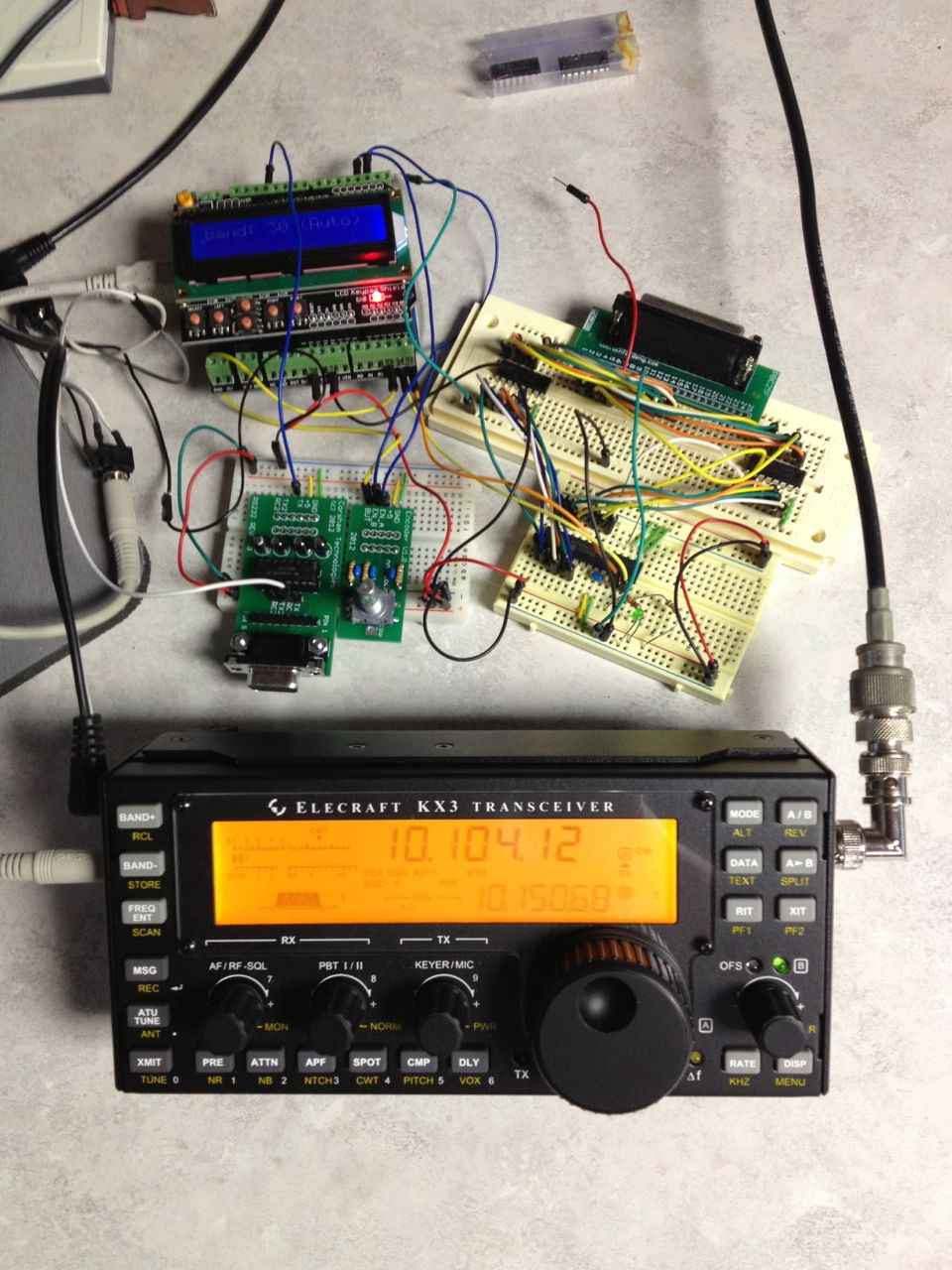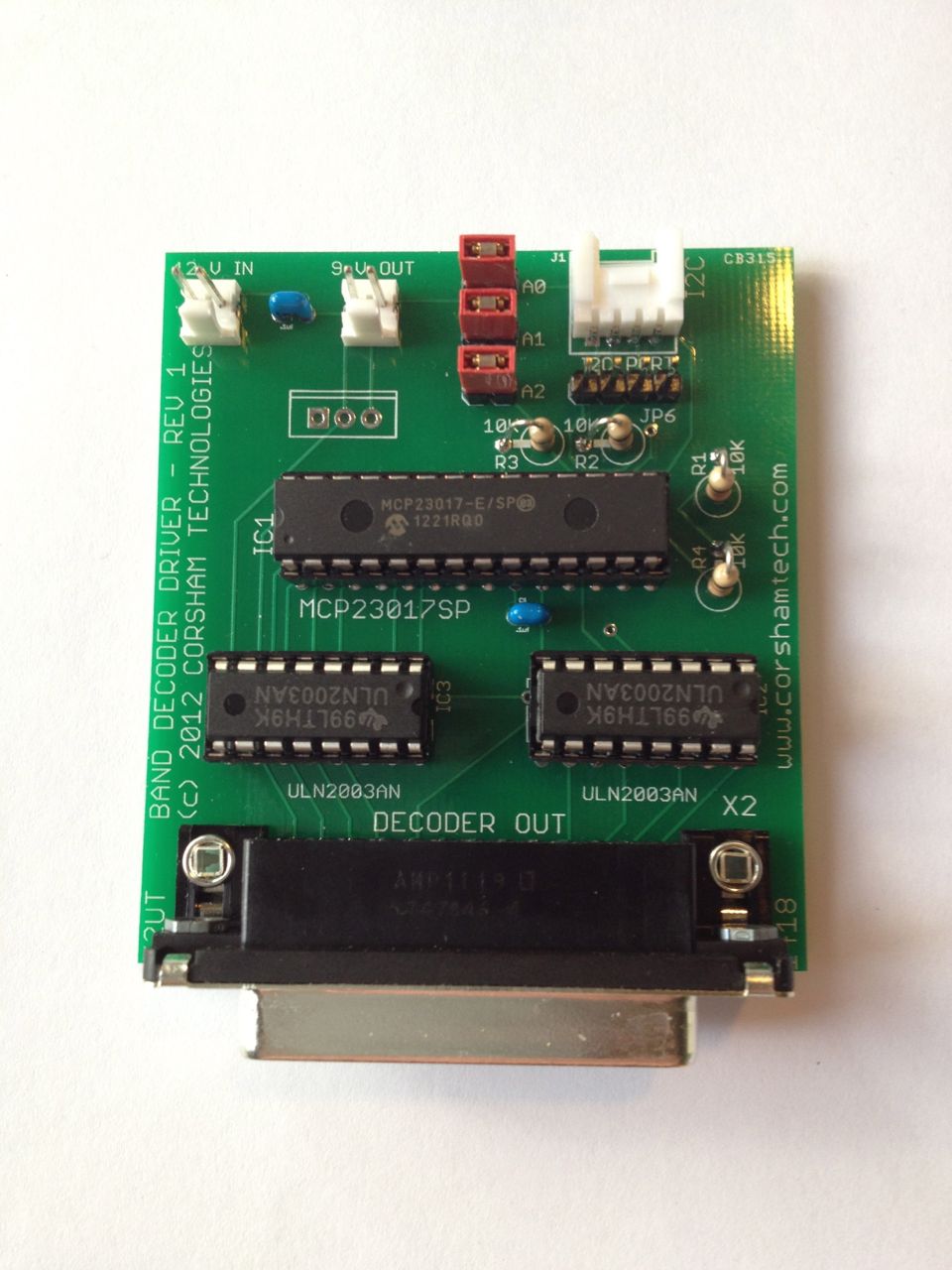We’ve have KX3 sn 1418 since August and have taken it on camping trips with the Boy Scouts and had it set up for emergency communications during Hurricane Sandy. Being spoiled by always having Top Ten band decoders, I needed something similar for the KX3.
Note: For those readers who aren’t ham radio operators, this product is probably of limited interest.
I’ve had a complete decoder working for months already, all breadboarded based on an Arduino:

Kind of messy, but it works 😉 I usually run DX4WIN on my logging computer so the Arduino just sniffs the line looking for IF data and decodes the band from the current radio frequency.
This is a multi-step project, the first being to replace the driver that goes to my antenna switch with a new PC board:

That works great! It uses and I2C port expander to control 14 output lines on the female DB-25 connector, so it just replaces the Top Ten decoder; same connector. The board also has a 12-to-9 volt regulator (not solder in place yet in the picture) to give 9v to the Arduino’s VIN line. The I2C connector is one of those small TE connectors used on all the GROVE boards. We’ll be introducing more boards with these connectors and will stock the connectors and cables.
The DB-25 simply pulls one or more of 14 lines to ground. There is also GND and +12 on two pins, making this board potentially useful for controlling many things besides antenna switches.
The UI is done completely with a 16×2 LCD and a rotary encoder. The user can select the baud rate of the interface, manually or automatically select bands, etc. The next step in software is to allow for driving specific bits on the interface rather than predefined band codes.
The next step will be a board that is either a standard shield that simply plugs into an Arduino or a stand-alone board with the remaining logic.
I’m not sure if this will become a real product or just an experiment, but if you’re interested, let me know.


